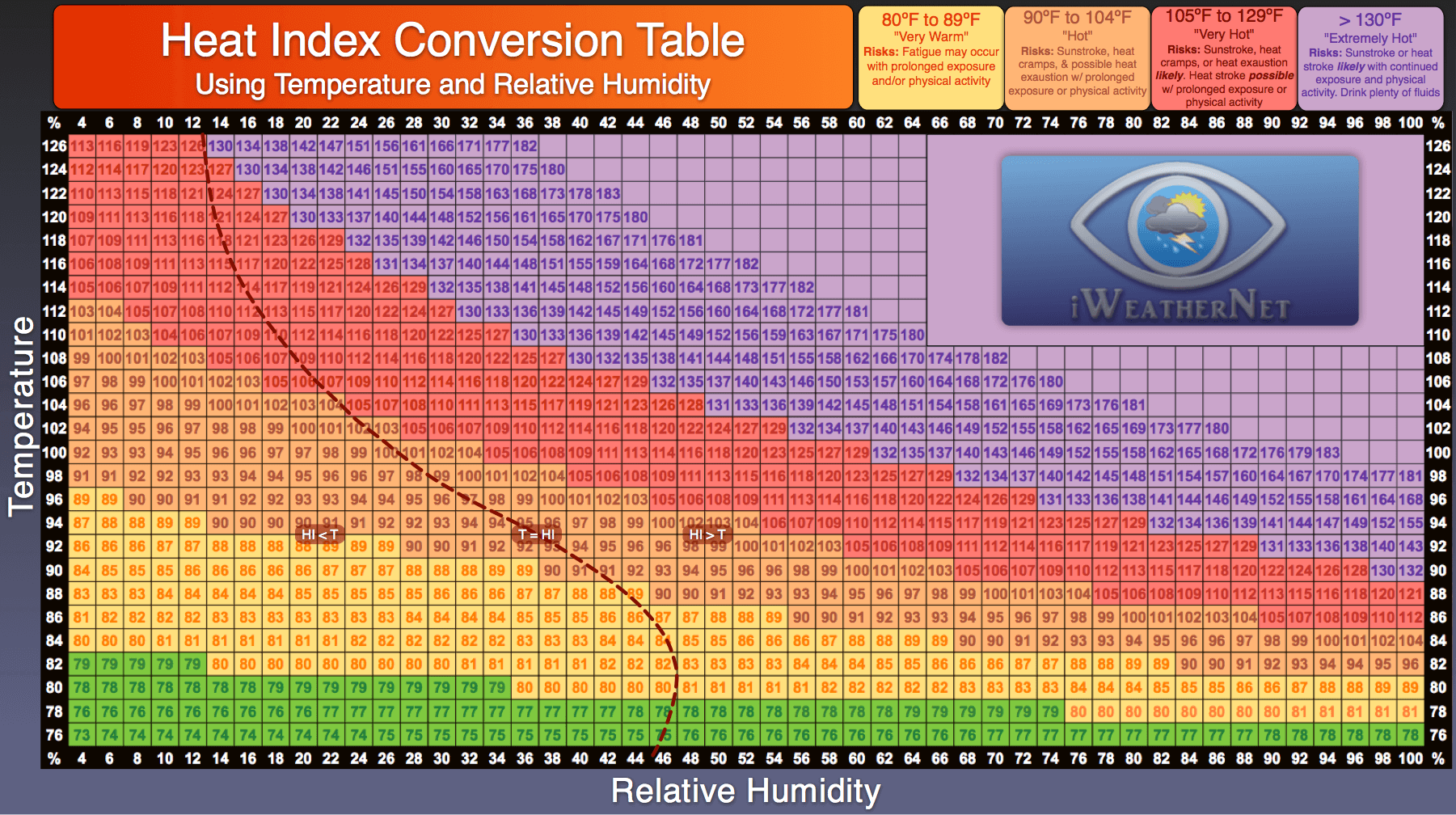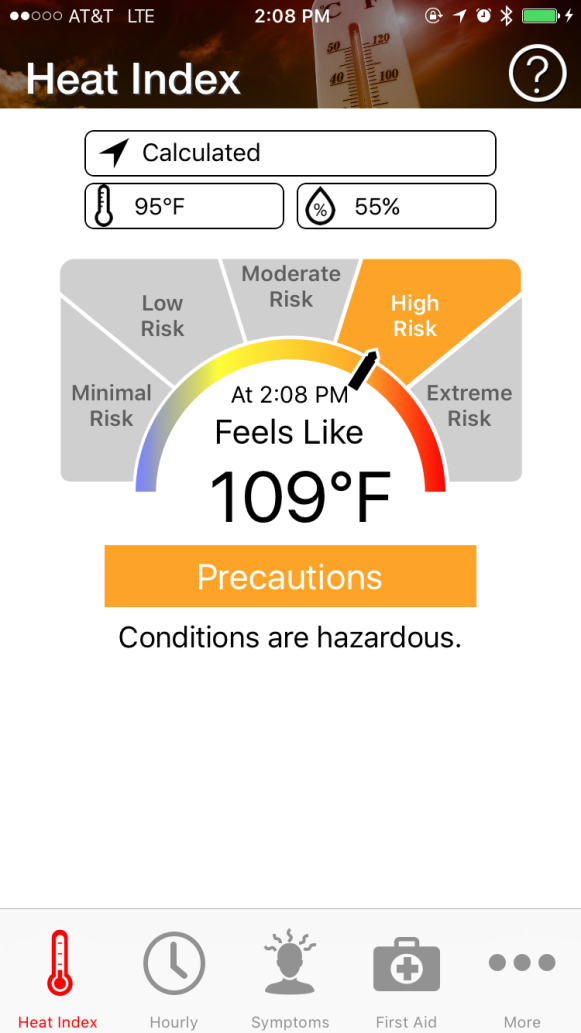When it comes to heat safety, it’s important to stay informed and take necessary precautions. The summer months can bring scorching temperatures and high humidity levels, which can pose a risk to our health. In this article, we’ll explore various aspects of heat safety, including the heat index, tips for staying safe in hot weather, and the importance of heat stress prevention.
The Heat Index and Its Significance
One crucial factor to consider when assessing heat safety is the heat index. The heat index takes into account both the temperature and humidity to determine how hot it actually feels to the human body. By considering the heat index, we gain a better understanding of the potential dangers posed by high temperatures.
The heat index can help us identify the risk of heat-related illnesses, including heat exhaustion and heatstroke. By closely monitoring the heat index, we can take appropriate measures to protect ourselves and those around us.
Tips for Staying Safe in Hot Weather
When confronted with hot weather conditions, it’s essential to prioritize our safety. Here are some valuable tips to help us stay comfortable and protected during this challenging period:
1. Stay Hydrated
Drinking plenty of fluids is crucial to prevent dehydration. Opt for water and avoid excessive consumption of sugary or caffeinated beverages.
2. Dress Appropriately
Wear lightweight, loose-fitting clothing made from breathable fabrics such as cotton. This allows for better air circulation and helps to keep our bodies cool.
3. Seek Shade
Avoid direct exposure to the sun during peak hours, typically between 10 a.m. and 4 p.m. Instead, find shade or remain indoors where it’s cooler.
4. Use Sunscreen
Applying sunscreen with a high SPF can protect our skin from harmful UV rays. Remember to reapply regularly, especially after sweating or swimming.
5. Take Breaks
If you’re engaging in outdoor activities, take regular breaks in shaded or air-conditioned areas to give your body a chance to rest and cool down.
The Importance of Heat Stress Prevention
Heat stress is a condition that occurs when the body overheats due to prolonged exposure to high temperatures. It can lead to heat exhaustion or, in severe cases, heatstroke, which is a life-threatening condition. Therefore, it’s crucial to implement preventive measures to avoid heat stress.
 Heat stress prevention involves a combination of environmental, personal, and workplace measures. Employers should implement strategies to cool down workspaces and provide employees with regular breaks in shaded or air-conditioned areas. Personal measures include staying hydrated, wearing suitable clothing, and avoiding strenuous activities during extreme heat.
Heat stress prevention involves a combination of environmental, personal, and workplace measures. Employers should implement strategies to cool down workspaces and provide employees with regular breaks in shaded or air-conditioned areas. Personal measures include staying hydrated, wearing suitable clothing, and avoiding strenuous activities during extreme heat.
Recognizing and Responding to Heat-Related Emergencies
Despite taking precautions, heat-related emergencies can still occur. It’s essential to recognize the signs and respond promptly to ensure the affected individual receives the necessary medical attention. Common heat-related emergencies include heat exhaustion and heatstroke.
 Heat exhaustion is a condition characterized by excessive sweating, weakness, dizziness, nausea, and headaches. If someone exhibits these symptoms, they should be removed from the heat, given fluids, and encouraged to rest in a cool, shaded area. Heatstroke, on the other hand, is a medical emergency that requires immediate medical attention. Symptoms of heatstroke include a high body temperature, confusion, rapid heart rate, and even loss of consciousness. Call emergency services immediately if heatstroke is suspected.
Heat exhaustion is a condition characterized by excessive sweating, weakness, dizziness, nausea, and headaches. If someone exhibits these symptoms, they should be removed from the heat, given fluids, and encouraged to rest in a cool, shaded area. Heatstroke, on the other hand, is a medical emergency that requires immediate medical attention. Symptoms of heatstroke include a high body temperature, confusion, rapid heart rate, and even loss of consciousness. Call emergency services immediately if heatstroke is suspected.
Tools and Resources for Heat Safety
Fortunately, there are numerous tools and resources available to help us stay informed about heat safety and take appropriate action. Here are some valuable sources:
1. Occupational Safety and Health Administration (OSHA)
The OSHA website provides an extensive range of resources related to heat safety, including the Heat Safety Tool. This mobile app helps workers and employers calculate the heat index and provides recommendations to prevent heat-related illnesses.
2. The Old Farmer’s Almanac
The Old Farmer’s Almanac offers a heat index chart which provides valuable information on how temperature and humidity levels can impact our bodies. This chart can assist us in understanding the potential risks associated with specific weather conditions.
 ### 3. Convergence Training
### 3. Convergence Training
Convergence Training provides a heat stress safety video that offers comprehensive information on heat stress prevention and the importance of staying safe in hot weather conditions. This resource can serve as a valuable learning tool for both employers and employees.
4. Inspect
Inspect provides an informative article that highlights how heat stress can lead to heatstroke and emphasizes the importance of taking necessary precautions. This resource sheds light on the severity of heat-related illnesses and serves as a reminder of the potentially life-threatening nature of extreme heat.
Conclusion
Heat safety is vital, particularly during hot summer months. By understanding the heat index, following crucial safety tips, and recognizing the signs of heat-related emergencies, we can protect ourselves and others from the potential dangers of extreme heat. Utilizing tools and resources available to us further enhances our ability to stay informed and take appropriate action when faced with high temperatures. Remember, prioritizing heat safety is key to enjoying a safe and comfortable summer!